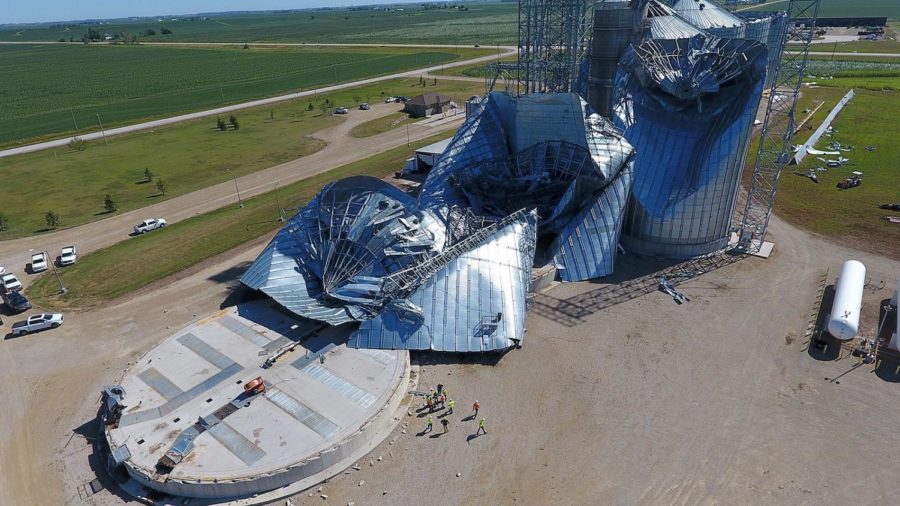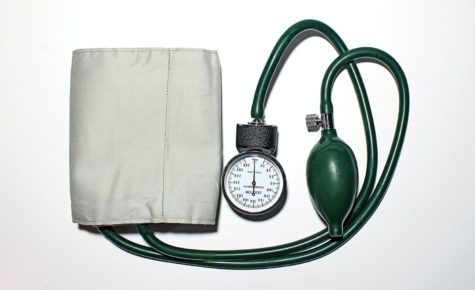Editorial: Revisiting the August derecho
October 22, 2020
In August, the Midwest experienced a derecho — a storm so severe that wind speeds reached the level of a Category 4 hurricane, creating $7.5 billion in damage and causing the deaths of four people — three of whom were Iowan. Four tornadoes touched down that day in Iowa alone.
The National Oceanic and Atmospheric Administration recently compiled a report showing the derecho ranked as the fourth most severe storm since 1980 and the costliest thunderstorm event in modern U.S. history. This year, only Hurricane Laura caused more damage (with the possible exception of California’s wildfires, with the total damage to be determined).
This month, the U.S. Department of Agriculture reported the storm downed more than 850,000 acres of crops, a 50 percent increase in estimates from September. Gov. Reynolds’ disaster proclamation in August estimated a $3.8 billion hit for the agriculture industry. A total of 14 million crop acres were impacted by the storm, and estimates of crop loss will only continue to grow, even two months after the event.
The derecho devastated farmers all across the Midwest, and some farmers in Iowa may not be able to recover.
It could not have come at a worse time. COVID-19 hit every state’s economy hard, and Iowa is no exception. The devastating impact from the storm on our agriculture industry is going to have serious long-term consequences on the state and its residents.
Consequences that don’t stop with agriculture.
Homes across the entire state felt damage, with the most destruction centered around Cedar Rapids. The derecho damaged close to 90 percent of all the buildings in Cedar Rapids and completely destroyed more than 1,000 homes. Some people in Cedar Rapids still have no place to live, and others are waiting on construction, repairs and debris removal.
And tragically, three Iowans died.
This happened two months ago. With this recent report, it’s the perfect time to reflect on the aftermath of the storm and examine what our state leadership did to, well, lead Iowans through the crisis.
Did Gov. Reynolds do enough?
Our immediate response is no. First, she waited six days before requesting a Presidential Major Disaster Declaration; the reason for this, she claimed, was because they needed to assess all the damage first before submitting a comprehensive request for funding.
They didn’t need to do this.
In 2008, a summer of severe weather and historic flooding hit the state hard (and nearly submerged Cedar Rapids). Parkersburg, located in Butler County, experienced an EF5 tornado that devastated the entire town and killed nine people. Former Gov. Chester Culver applied for a major disaster declaration the day after the storm. Though limited in scope, President George W. Bush approved his request a day later, and the two most-damaged counties received federal assistance immediately.
There is a provision in federal law, available to every state, to waive preliminary requirements and expedite the process of receiving federal funding if a catastrophic event occurs. Former Gov. Culver used this waiver in 2008 to apply for federal aid. The request needed to be amended and refiled several times to get all the funding necessary, true, but those areas of the state that were in the most crisis received emergency funding two days after the storm.
Why did Gov. Reynolds not do the same?
The derecho caused the most damage to Cedar Rapids, located in Linn County. Gov. Reynolds could have followed the same process as former Gov. Culver: waiving the preliminary assessment of damage for just Linn County and issuing Linn County a federal declaration. Through this process, Cedar Rapids would have been able to secure any necessary resources much sooner.
While the editorial board very much disagrees with Gov. Reynolds’ decision to delay the request, we admit there is some logic to her reasoning. A comprehensive, complete request is more likely to be completely approved by the president and there will be more funding available for the state as a whole.
Still, when one thinks about the people in Cedar Rapids and all across the state who struggled immensely in the immediate aftermath — and who are still struggling — it’s hard not to vehemently disagree with the decision. Perhaps refiling a request for more funding would be inconvenient, but inconvenience matters less when the safety and well-being of your citizens is on the line.
To be fair to Gov. Reynolds, she did declare a state disaster for several counties, including Boone and Story, the day of the derecho. This did not include Linn County. The proclamation allowed the Iowa Department of Human Services to administer individual disaster assistance to (eligible) residents of those counties. Impacted counties used state resources to assist in recovery efforts, but for some counties, state resources weren’t enough.
Since Aug. 10, Gov. Reynolds issued four more state disaster proclamations and extended the disaster proclamations for select counties twice.
Gov. Reynolds certainly should have done more for Iowans in the aftermath. She did not do everything she possibly could for the state of Iowa following the derecho, but neither did she entirely abandon its residents. There are good and bad aspects to the state’s response.
Of course, it is two months later. What’s the point of this entire editorial?
We need to be more prepared.
According to climate scientists, events like the California wildfires and Hurricane Laura are going to become more common and more severe in the future.
The link between climate change and natural disasters is definitive, but the connection between global warming and derechos is still unknown. In other words, derechos cannot be directly linked to man-made global warming the way other disasters can.
There is, however, the potential for an increase in the number of derechos a year, or the intensity of the derechos themselves, and that is more than enough to be concerned. Even if global warming does not have an impact on derechos, the Midwest experiences a derecho once every one to two years.
If the next one is as severe as the one in August, or more severe, will we be prepared? Or will our state be caught off guard the way we were two months ago?

















